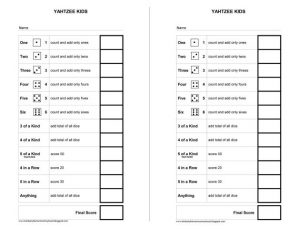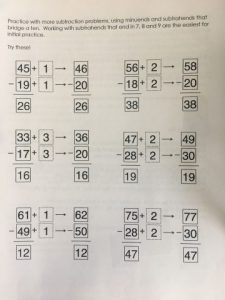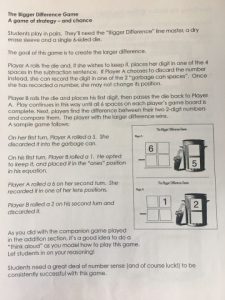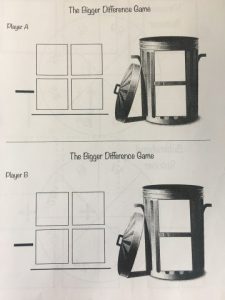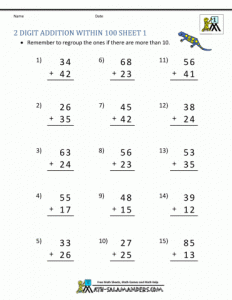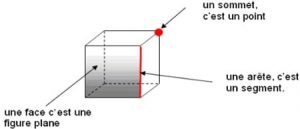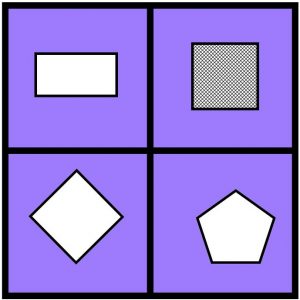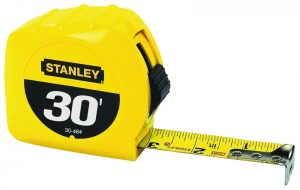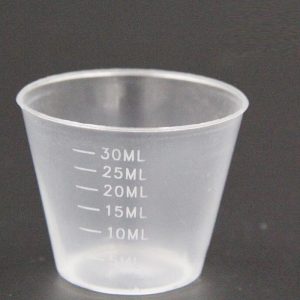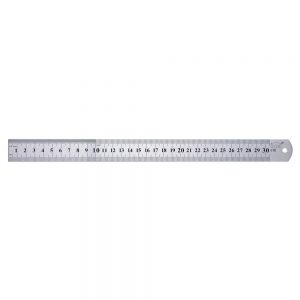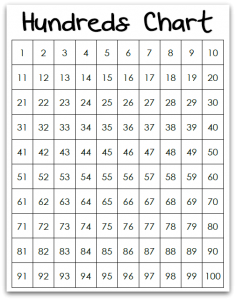To keep up your skills in Math, you may want to practice by playing some games. You can say the numbers in French and practice your counting/skip counting. Here are some activities you could try:
- Adding prices at the grocery store
- Math minutes (how many addition to 20 questions can you answer in 1 minute… in 2… in 5? What abut Subtraction?)
- Creating patterns with objects found indoors and outdoors
- Creating patterns with beads or string while making jewelry/friendship bracelets
- Following patterns by learning how to crochet or knit: https://www.youtube.com/watch?v=Cjo13OyjZgo
- Measuring ingredients in baking (with the help of an adult): http://projectchef.ca/recipes/
- Measuring ingredients in Science experiments (with the supervision of an adult)
- Measuring objects around the house
- Building a project that requires measurements (sewing, bird house, etc)
- Shape scavenger hunts
- Number puzzles, Sudoku
- Play card games: Go Fish, War, Snap etc
Here is a list of free resources:
- Games: https://www.prodigygame.com/
- Games: http://www.learnalberta.ca/content/mfam3/flash/index.html
- Games: https://www.coolmath4kids.com/
- Games: https://www.splashlearn.com/
- Videos and lessons: https://www.khanacademy.org
- Worksheets: https://www.mathworksheets4kids.com/math.php
- Make your own Worksheets: https://superkids.com/aweb/tools/math/
Here are some optional activities that review some of the topics we learned this year:
- Estimation
Before counting, estimate the total of each item
Count the number of items. What strategy did you use to count the total of items. What steps did you take to figure out the total?
- Graphing
Over the course of the week, record everything you eat on the graph. If you eat a fruit color in or draw the fruit you ate under the fruit column. If you had something sweet (cookie, muffin, ice cream, pop, bubble tea etc.), color or draw the item you ate under the desert column. Keep this graph next to your kitchen table to help you remember to record your food.
![]()
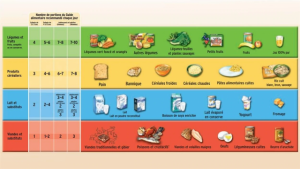
![]()
- Measurement
Using fishy crackers or another non-standard unit of measurement about equal length and complete the following worksheet.
Here are the instructions in English
- Measure the right side of the page. How many crackers did you need to measure the right side of the page.
- Measure the left side of the page. How many crackers did you need to measure the left side of the page.
- What did you notice?
- Measure the bottom side of your page. How many crackers did you need to measure the bottome
*** How many will you need to measure the length around the page? (Bonus not on the page)
la-mesure-avec-des-poissons-goldfish-dragged-1
la-mesure-avec-des-poissons-goldfish-dragged 2
- Measurement
Get your favorite snack (fishy crackers, cereal, chips, bear paws, yogurt etc.)
Can you find the nutritional information on the back. It looks like this.
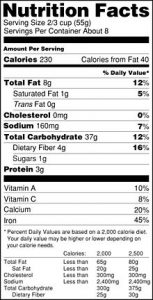
Look to see how much sugar/sucre your treat contains. It will be measured in grams
4g of sugar= 1 teaspoon of sugar
Can you figure out how many teaspoons of sugar are in your treat? Measure the sugar with a teaspoon.
A can of coke has 39 grams of sugar. How many teaspoons is that? Can you measure that out?
- Subtraction and addition practice
Option 1
Shake, Drop, Add: You will need 5 (or more) coins each. Hold all coins in a closed fist. Shake your hands and count to 3. On 3, drop your coins in front of you. For each coin that lands heads up, you score 5 points. For each coin that lands tails up, you score 2 points. If you are playing with a partner total your points to see who has the greater score and play again until someone get to 100. If you are playing alone, play until you reach 100, and tally how many hands it took you took to get to 100. After a few rounds, you might change the number of coins you play with and/or the number of points scored for heads and tails. Remember that you can always use a 100’s chart or a 100 object to help you with your counting.
Option 2
Shake, Drop, Subtract:You will need 5 (or more) coins each. Hold all coins in a closed fist. Shake your hands and drop your coins in front of you. This time you are counting down from 100. For each coin that lands heads up, you take away 5 points. For each coin that lands tails you take away 2 points. If you are playing with a partner the person who arrives at 0 first wins. If you are playing alone, play until you reach 0, and tally how many hands it took to you to get to 0 . Remember that you can always use a 100’s chart or a 100 object to help you with your counting.
Option 3
Yathzee (you will need five dice for this game)
Each player rolls five dice and then chooses whether to re-roll any of those dice. The best roll is a yahtzee, where all five dice have the same value. After three total rolls, the player then determines which scores she qualifies for with her roll.
Here is short video explaining that game: https://www.google.com/search?client=safari&rls=en&q=yahtzee+rules+for+kids&ie=UTF-8&oe=UTF-8
Yahtzee simplified score sheet: 